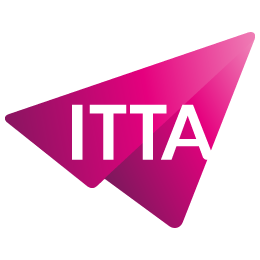Home > Trainings > IT Pro > Cloud Computing > Configuring and Operating Microsoft Azure Virtual Desktop (AZ-140)
Desktop virtualization has become essential for companies looking to provide a flexible, secure, and high-performance work environment. The “Configuring and Operating Microsoft Azure Virtual Desktop (AZ-140)” training course equips you with all the necessary skills to design, deploy, and efficiently manage Azure Virtual Desktop.
This in-depth course covers all aspects of Azure Virtual Desktop administration, including host pool configuration, remote session management, and performance optimization. You will learn how to use FSLogix for advanced user profile management and how to monitor virtual environments’ health using Azure Monitor. Each module combines theory and hands-on practice, ensuring an effective and practical learning experience.
Module 1: Azure Virtual Desktop Architecture
Module 2: Design the Azure Virtual Desktop Architecture
Module 3: Design for User Identities and Profiles
Module 4: Implement and Manage Networking for Azure Virtual Desktop
Module 5: Implement and Manage Storage for Azure Virtual Desktop
Module 6: Create and Configure Host Pools and Session Hosts
Module 7: Create and Manage Session Host Images
Module 8: Manage Access for Azure Virtual Desktop
Module 9: Manage Security for Azure Virtual Desktop
Module 10: Implement and Manage FSLogix
Module 11: Configure User Experience Settings
Module 12: Install and Configure Apps on a Session Host
Module 13: Monitor and Manage Performance and Health
Module 14: Plan and Implement Updates, Backups, and Disaster Recovery
The digital transformation is driving many companies to adopt virtual desktop solutions to ensure greater flexibility and improve productivity. Azure Virtual Desktop (AVD) is a comprehensive solution that enables the execution of Windows applications and desktops in the cloud, reducing reliance on local infrastructure. However, an effective implementation requires specific skills in Azure administration, virtualization management, and securing remote environments.
This training program covers all critical aspects of configuring and managing Azure Virtual Desktop. Unlike other generalist courses, this program delves deeply into strategic elements: from network performance management to user profile optimization with FSLogix, including security and task automation via Azure PowerShell.
A poorly configured infrastructure can lead to slowdowns and a poor user experience. With this training, you will learn how to assess capacity requirements, choose the right virtual machines, and apply best practices for networking and sizing. You will also discover how to secure access by implementing Microsoft Defender for Endpoint and Zero Trust strategies.
Managing a large-scale virtual environment can quickly become a complex task. Automation saves valuable time while ensuring greater configuration consistency. This training will teach you how to use Azure PowerShell to automate recurring tasks such as session management, deploying session hosts, and applying updates.
This course is designed for cloud administrators, system engineers, and IT managers who want to master the deployment and management of an Azure Virtual Desktop environment. It is particularly suited for companies migrating from an on-premises infrastructure to a virtualized cloud environment and looking to ensure a smooth and secure transition.
What are the prerequisites for this training?
A good understanding of Azure administration and VDI infrastructures is recommended. Basic knowledge of networking and identity management is also preferred.
What tools will I learn to use?
This course will train you in the advanced use of Azure Virtual Desktop, Azure PowerShell, FSLogix for user profile management, and Microsoft Defender for Endpoint for security.
How is this training different from other Azure courses?
Unlike generalist Azure courses, this one is entirely dedicated to the implementation and management of Azure Virtual Desktop. It is therefore more in-depth and technical on aspects specific to virtual desktops.
Does this training prepare for a certification?
Yes, this training is designed to prepare you for the AZ-140 exam, which validates your skills in Azure Virtual Desktop administration.

Nous utilisons des cookies afin de vous garantir une expérience de navigation fluide, agréable et entièrement sécurisée sur notre site. Ces cookies nous permettent d’analyser et d’améliorer nos services en continu, afin de mieux répondre à vos attentes.
Monday to Friday
8:30 AM to 6:00 PM
Tel. 058 307 73 00
ITTA
Route des jeunes 35
1227 Carouge, Suisse
Monday to Friday, from 8:30 am to 06:00 pm.